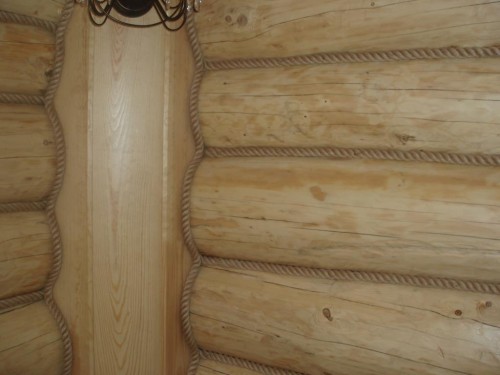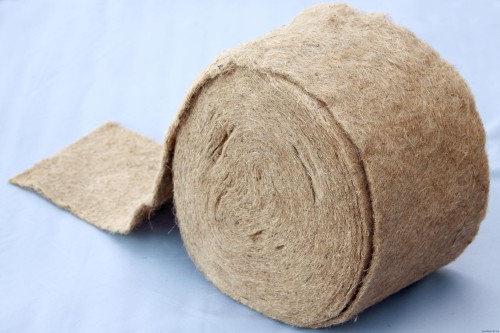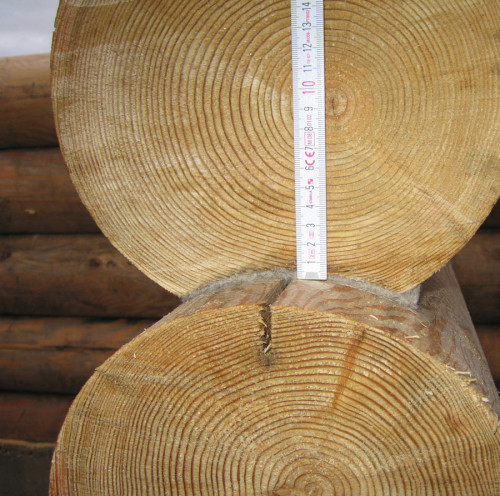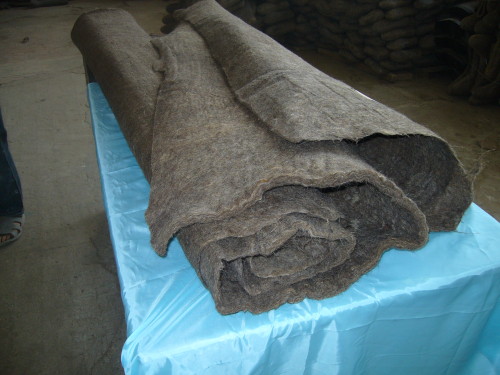
Felt for insulation: Installation instructions Walls
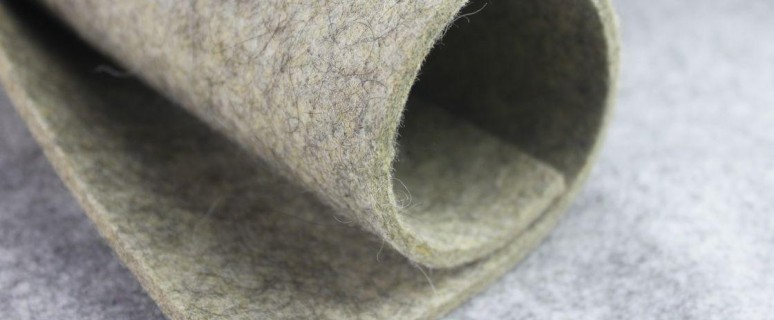
As a material for insulation, the housing felt has been used for several centuries. It is difficult to believe in it, however, it is a common insulation, which perfectly performs its immediate functions.
Content
Most often felt is used to insulate small buildings, as today many people cannot afford expensive insulating material. At the same time, you should not think that the felt is ineffective. Everything is completely vice versa.
Indeed, it is the low cost of the material and attracts ordinary consumers, it should not think that felt is a universal material. He has its drawbacks, which for some owners may seem really serious, given the specifics of the structure and weather conditions.
In some cases, it is best to combine felt with some other insulation. This is not only allowed to avoid obvious drawbacks of the long-term material, and significantly increase the characteristics of insulation. Most often, different thermal insulators have opposite advantages and disadvantages. Thus, it is possible to compensate for all weaknesses of materials.
Main features of felt for thermal insulation
Immediately need to say that often felt is used to insulate wood houses. It is in this case that the material demonstrates good efficiency. If we use felt in other conditions, it will also show myself with a good part, but some flaws will be observed, which we will talk a little later.
Many builders consider the strength of the felt is the lack of necessity in the additional processing of the housing surfaces. This significantly reduces the entire repair process, and also allows you to forget about the integrity of the finish, which in different situations can collapse.
Due to the fact that this insulating material is relatively inexpensive, it can be laid in several layers. It will also increase the effectiveness of felt, and at the same time we will save a lot of money without buying modern thermal insulation materials.
Unfortunately, felt can be used far from all climatic conditions. This must be previously recognized from specialists who offer felt products. In this regard, the material is more demanding than the rest.
Advantages and disadvantages of felt
To begin with, consider the advantages of the felt insulation:
- Ecology. This is most likely the main feature of this thermal insulation material. Felt is a completely natural material, and in this regard he has nothing to do with many other thermal insulation materials. It should be borne in mind that in the current conditions this advantage is very important, since health and safety are the main aspects that it is worth paying attention to when choosing a material. Since the material is environmentally friend, it isolates the dwelling from strangers. Moreover, felt incredibly easily absorbs and gives moisture, which is well reflected on his quality and durability.
- Easy installation. Felt is very easy to mount on the surface. Material can be taken in hand without any warnings. A completely different situation with some modern insulating materials (for example, with glass gamble), in which the installation of the insulation should be performed exclusively with the help of protective gloves, wear overalls.
- Noise insulation. First of all, felt is activated for thermal insulation, however, canceled noise insulation qualities can be performed as a pleasant bonus. Most often it is for this reason that felt is used not only in residential buildings, but also in some industrial premises, and even in automotive workshops, where the noise level is very high. If you draw an analogy with other insulating materials, then in this case, modern insulation often perform only one function, and the sound insulation must be stacked separately.
- Low price. The material is actually cheap, and modern analogues are much more expensive than the felt insulation. You can use felt in two layers, but still benefit, abandoning modern materials. This advantage is particularly important, if we consider that the material is completely eco-friendly.
There is still a lot of other benefits at felt. It can be noted, for example, the fact that the material is easy to handle. It is easily cut into several parts, if this requires the repair process. As already mentioned, the positive aspects of the material may appear depending on the specifics of the structures and climatic conditions.
Disadvantages of felt insulation:
- Low efficiency. As already mentioned, it is advisable to use felt for the insulation of wooden houses. In other cases, this material will demonstrate itself from the strongest side. Also felt is not used for the insulation of large housing, multi-storey buildings, and it must be remembered. If you need to increase the efficiency of thermal insulation, it is possible, as already mentioned, use two layers of insulation.
Often the material is used exclusively for noise insulation of the premises.
Selection of felt insulation
The felt insulation refers to interventional resources, as it is often used in wooden houses. Accordingly, we are talking about the installation of the material between the timber bars. You can simply lay the material across the entire area of \u200b\u200bthe walls, as it comes based on modern insulating products. Of course, the most effectively shows itself the first option, however, you can use two scenarios at once.
If the repair process is carried out correctly, the felt will not only be well maintained in the home, but also to absorb moisture, and, accordingly, take the wood from this negative impact. However, in order not to face troubles, it is necessary to carry out the process of insulation.
Special attention should be paid to the thickness of the insulating material. Often felt is sold to 15 mm thick. If the house we go to insulate, we have a rounded log, then the gap between these elements is in the range of 8-10 mm. The insulation must be a little wider than this gap. It is advisable to lead a small test by bought several variants of the insulation. Thus, the felt material should be tightly between the logs.
You can find jute or linen felt. These options are the most suitable for the house built on the basis of logs.
In the event that the house to be insulated, brick or concrete, it is necessary to lay felt as the most common insulating material. Felt products are most often supplied in the form of rolls, which are very easy to unwind and put on the surfaces. It is necessary to take into account the length of the roll and its thickness. For example, if a doome is created, the step between metal elements must correspond to the insulation width. Especially effectively, as already mentioned, lay material in 2 layers. The second layer hides all the flaws of the first and vice versa.
The most popular fiber produced on the basis of felt is the jute option. But you need to know that it is used exclusively for the insulation of wood houses. In some cases, it is used for brick structures, but most often it is for sound insulation. As a thermal insulator, the material will show itself far from the best side.
Returning to the insulation of wooden houses, it should be said that it is best to carry out this process directly during construction. This will allow the best way to position the insulating material between wood units. Already after the construction between isolation and wood, small gaps can be found, which negatively affect the effectiveness of the felt. Unfortunately, getting rid of such unpleasant moments is incredibly difficult, since wood has characteristic irregularities, even after processing.
It is possible to carry out insulation of the walls in the usual way at any time. Here, the main thing is to carry out a quality repair process, paying attention to all irregularities that are formed when laying felt.
Next, we consider the main steps of the house insulation with the help of felt, as well as analyze the main features of the process.
Installation of felt warming
In this case, we will take the basis of the installation of felt during the construction of a woody house. We have already mentioned many times that it is felt that is best suited for insulation of a building, built on the basis of wood.
- It all starts with a detailed calculation of all wood elements of the dwelling. It is necessary to calculate the number of crowns, as well as take into account the presence of at least small cracks and gaps. Based on this information, we can establish how much insulation we will need. It is worth considering that in places where the gaps are present, you need a little more felt. Of course, during construction, you need to pay attention to the fact that the irregularities of logs or bars can negatively affect the overall building process. In this case, this may affect not the highest thermal insulation efficiency.
- Thus, the insulation material is highly rolled through the laid bruus. And the felt should look a little out of wood. This will allow you to be sure that the insulation is qualitatively located along the entire contact surface of the tree. It should be borne in mind that the insulation can be twice as well if there is a slightly bigger gap than in the rest of the sections. If the gap is too big, several layers of the insulation will definitely not help.
- The fastening of the insulation to the wood occurs with the help of a construction stapler. Staples should be firmly entering the tree, after which it will be almost impossible to move or tear the thermal insulation material. The pressure of bars from above should not affect the fastening state. However, it is necessary to ensure that the staples tightly pressed felt.
- After the construction process is completed, you can safely trim the surplus of the insulation. For this you need to arm yourself with a sharp knife or large scissors. It is necessary to do it carefully, and to cut only those parts of the insulation that frankly hang from the wall.
Efficiency This method of insulation will provide only if we are placing felt between all the intervals of bars. Any gaps present dramatically worsen the situation in the cool periods of the year. As an additional insulation, you can try to lay material under the roof of the dwelling. It will also save so necessary warm in winter. You can experiment a lot with felt, as the material is very cheap.
The use of felt in different conditions
As already mentioned, the insulation based on felt can also be used as a substitute for modern insulating materials (such as glass gamble, foam). At the same time, it is necessary to once again note that such decisions are used extremely rare, since today modern materials show themselves much more efficiently.
Despite this, due to the cheapness, felt is also often used, and its laying on the surface occurs in the same way as modern materials. To do this, you need to have at your disposal metal profiles, screwdriver, self-tapping screws, as well as special dowels that can withstand the large surface of the insulation.
Thus, a doom is created, consisting of metal elements that are attached to the housing wall by self-draws. The arrangement of profiles should be such that it is possible to be tightly arrange the felt insulation on the wall surface. It is best to lay material in two layers in order to eliminate the negative impact, possibly present to the gaps.
At the very end, you need to securely secure the insulation with the help of a dowel. It is done evenly, and special plastic ships of the dowels must reliably press the material to the wall. Next, a full finish of the wall surface is performed.




